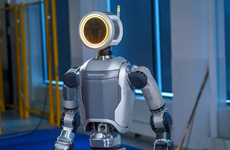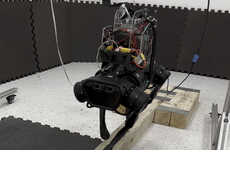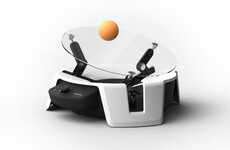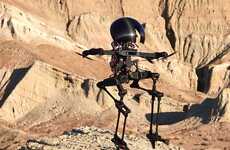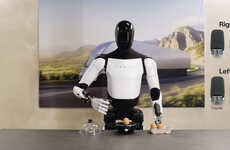
The New Atlas Robot Offers Improved Balance and Functioning
Rahul Kalvapalle — February 26, 2016 — Tech
References: bostondynamics & cnbc
The newest version of the Atlas robot is shorter than its predecessor, an attribute that makes it more balanced than ever and makes it better suited towards operating in indoor environments.
This particular iteration of the Atlas robot is capable of operating in a completely untethered setup. It is fitted with a whole slew of brand new sensors in its legs as well as its body that enable it to offer better balance. Stereo sensors and LIDAR (light detection and ranging) technology make it capable of detecting and avoiding any obstacles that may appear in its path.
The robot is also capable of carrying out complicated motions such as stacking objects while twisting its body in order to gain optimum body balance and function.
Ultimately, the new Atlas robot is remarkably flexible and versatile in its physical motions, and is single-handedly taking the field of robotics into the future.
This particular iteration of the Atlas robot is capable of operating in a completely untethered setup. It is fitted with a whole slew of brand new sensors in its legs as well as its body that enable it to offer better balance. Stereo sensors and LIDAR (light detection and ranging) technology make it capable of detecting and avoiding any obstacles that may appear in its path.
The robot is also capable of carrying out complicated motions such as stacking objects while twisting its body in order to gain optimum body balance and function.
Ultimately, the new Atlas robot is remarkably flexible and versatile in its physical motions, and is single-handedly taking the field of robotics into the future.
Trend Themes
1. Untethered Robots in Indoor Environments - The untethered capability and advanced sensors in this latest Atlas robot version are paving the way for robots to operate in indoor environments autonomously.
2. Improved Balance and Functioning - The improved balance and flexibility of the new Atlas robot provides opportunities for robots to perform more complicated and nuanced tasks, increasing their utility and value.
3. Stereo Sensors and LIDAR Technology - The introduction of stereo sensors and LIDAR technology in this new Atlas robot iteration opens up possibilities for more advanced detection and obstacle avoidance capabilities in robotics.
Industry Implications
1. Manufacturing - The increased agility and flexibility in the new Atlas robot version presents manufacturing companies with opportunities to automate more complex operations.
2. Logistics - Improved obstacle avoidance and balance in this Atlas robot version have the potential to disrupt the logistics industry by enabling robots to work alongside humans to sort and move products.
3. Service Industry - Flexible and adaptable robots with enhanced balance and sensing capabilities like the Atlas robot can offer new solutions in the service industry by performing tasks that require mobility and dexterity.
1.7
Score
Popularity
Activity
Freshness

